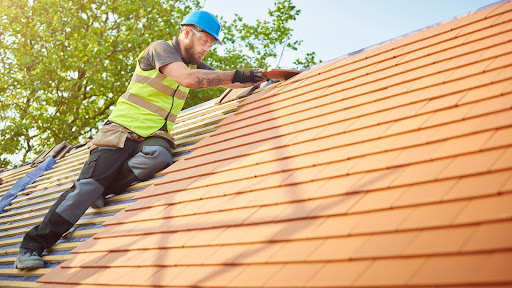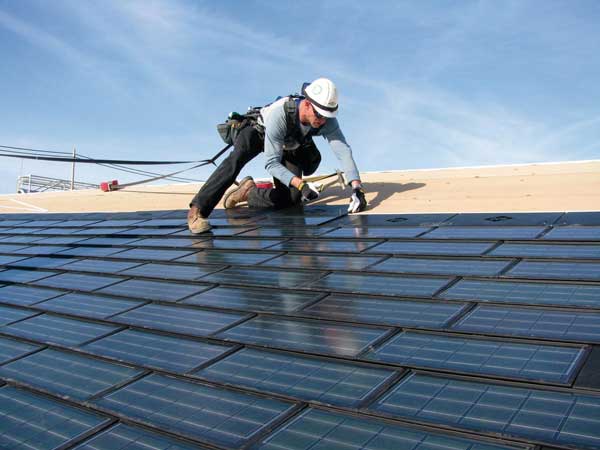A Comprehensive Guide to Effective Roof Covering Apartment Roof Covering Installment
The complexities of level roofing installation demand a meticulous technique, beginning with a thorough understanding of various level roof kinds and the important products required for optimum performance. An effective installation hinges not just on the choice of products but likewise on the prep work and execution of each action involved in the process.
Recognizing Apartment Roofing Kind
When taking into consideration flat roofing systems, it is necessary to understand the different types offered, as each deals distinctive benefits and disadvantages tailored to particular requirements. The most typical kinds of level roof coverings consist of Built-Up Roofing (BUR), Modified Bitumen, and Single-Ply membrane layers.
Built-Up Roof consists of multiple layers of asphalt and crushed rock, giving outstanding sturdiness and climate resistance. It is specifically valuable in locations susceptible to serious climate condition however may require more upkeep as a result of its intricate building and construction.
Changed Asphalt is a prominent option for its ease of installation and flexibility. It frequently employs a self-adhesive or torch-applied approach, which can be useful for fast repair services and long-lasting performance. Its life-span can be much shorter compared to BUR.
Single-Ply membrane layers, consisting of Thermoplastic Olefin (TPO) and Ethylene Propylene Diene Monomer (EPDM), are acknowledged for their lightweight nature and power effectiveness. These materials are usually liked for industrial buildings as a result of their cost-effectiveness and simplicity of installation (Cleveland Roofing Specialists). They may not provide the very same level of insulation as various other choices.
Each roofing kind requires mindful consideration based upon climate, spending plan, and certain project needs.
Essential Materials for Apartment Roofing
A range of important products are essential for the effective installation of level roofing systems. The option of materials directly influences durability, performance, and total effectiveness.
Among the key materials is the roof covering membrane, which can be built from numerous substances such as polycarbonate polyolefin (TPO), ethylene propylene diene monomer (EPDM), or PVC. Each kind offers special advantages, including UV resistance and versatility, which are vital for extended efficiency.
Along with the membrane, insulation materials play a substantial role in energy effectiveness. Inflexible foam boards or polyisocyanurate insulation are popular options, as they supply excellent thermal resistance and wetness administration.
In addition, roofing adhesives and sealants are vital for ensuring a watertight setup. These products need to work with the picked membrane layer to prevent wear and tear gradually.
Planning For Installment
Appropriate preparation is necessary for a successful flat roofing system installation, as it lays the foundation for a sturdy and reliable roofing system. Begin by conducting a thorough examination of the existing roof covering structure.
Next, collect all required tools and products, making sure that they satisfy industry criteria. This includes water-proof membrane layers, insulation, flashing, and bolts. Familiarize on your own with the maker's specifications, as adherence to these standards is vital for service warranty functions.
Take into consideration weather conditions; prevent installment throughout heavy rain or extreme temperatures, which can impact product efficiency. By taking these primary actions, you can boost the likelihood of a successful flat roofing setup that fulfills both visual and architectural needs.
Step-by-Step Installation Process
With the groundwork established through comprehensive preparation, the next phase involves performing the flat roofing system setup systematically. Begin by guaranteeing that the structural deck is totally free and clean from debris. Next off, set up a vapor barrier to stop wetness build-up beneath the roofing material. This action is critical for keeping the roof covering's honesty gradually. the original source
Adhering to the vapor barrier installation, lay down insulation boards, guaranteeing they fit tightly with each other to reduce thermal connecting. Secure the insulation with ideal fasteners based on the roof covering type and neighborhood building codes - Cleveland Roofing Specialists.
Make certain appropriate overlap at joints and edges to produce a water tight seal. Use index adhesives, mechanical bolts, or warm welding as called for. Install blinking around borders, vents, and any roof covering penetrations to improve waterproofing. After installment, conduct a detailed evaluation to recognize any kind of potential issues prior to ending the project, guaranteeing a durable and dependable level roof system.
Upkeep Tips for Longevity
Normal upkeep is vital to ensure the longevity and efficiency of a level roof covering. Among the main tasks is to carry out routine inspections at least two times a year, preferably in springtime and autumn. During these inspections, look for signs of wear, such as sores, fractures, or pooling water, which can show underlying concerns.

Guaranteeing correct water drainage is critical to avoid water buildup. Examine and clear seamless gutters, downspouts, and scuppers to assure unhampered water circulation. Furthermore, evaluate seals around vents, skylights, and other penetrations for any indications of damage, using caulk or sealer as required to keep a watertight obstacle.
Last but not least, consider professional maintenance services every few years for extensive maintenances. By sticking to these upkeep pointers, you can significantly extend the life of your flat roof, ensuring it continues to be a dependable shield against the components.
Verdict
Reliable level roofing setup requires a systematic approach encompassing thorough inspections, product choice, and careful preparation. Abiding by the laid out actions during the installation procedure makes sure the appropriate application of roofing membranes and insulation while boosting waterproofing with reliable flashing installment. Carrying out routine upkeep methods considerably adds to the durability of the roofing system. By adhering to these guidelines, a resilient and reliable flat roof covering service can be attained, capable of withstanding numerous environmental problems.
The details of flat roofing installment demand a precise technique, starting with an extensive understanding of different level roof types and the crucial materials required for ideal efficiency.Correct prep work is important for a successful flat roofing installment, as it lays the foundation for a durable and efficient roof covering system. After installment, perform a comprehensive evaluation to determine any kind of possible concerns prior to ending the task, making certain a robust and reliable flat roof system.
